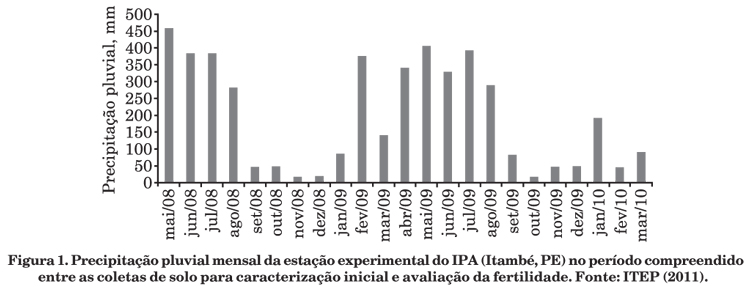Pastures are the fodder supply of Brazilian livestock, and are exhaustively degraded by nitrogen (N) deficiency. Intercropping with legumes, aside from nitrogen fixation, may have secondary effects on soil fertility, such as acidification or nutrient movement from deeper to the surface soil layers. This study evaluated the soil litter stock and fertility of degraded Brachiaria decumbens pastures after planting leguminous shrubs and forage trees. For this purpose, we sampled (March 2010) degraded Brachiaria decumbens pasture planted in July 2008 in an intercropping experiment with sabiá (Mimosa caesalpiniaefolia), leucaena (Leucaena leucocephala), mororó (Bauhinia cheilantha) and gliricidia (Gliricidia sepium), as well as N-fertilized and unfertilized brachiaria. Soil and litter was sampled (layers 0-10, 10-20 and 20-40 cm) in three transects, at alternating points covered by grasses and by legumes, totaling seven composite samples per plot to determine soil pH, P, K , Ca, Mg, and Al and calculate sum of bases, effective cation exchange capacity and aluminum saturation. Litter was visually separated in legumes, grasses and unidentified material to quantify dry matter, organic matter, N, P, C, acid-detergent fiber, and lignin. The use of legumes increased the levels of total N in litter and reduced the C: N ratios, especially of gliricidia and sabiá, although the lignin levels in the latter were high. There was a significant effect of legume soil cover, with no differences between them, on pH and K (layer 0-10 cm) and on pH, K and Al (layer 10-20 cm).
nutrients; biological nitrogen fixation; forest-pasture; tropical pastures








